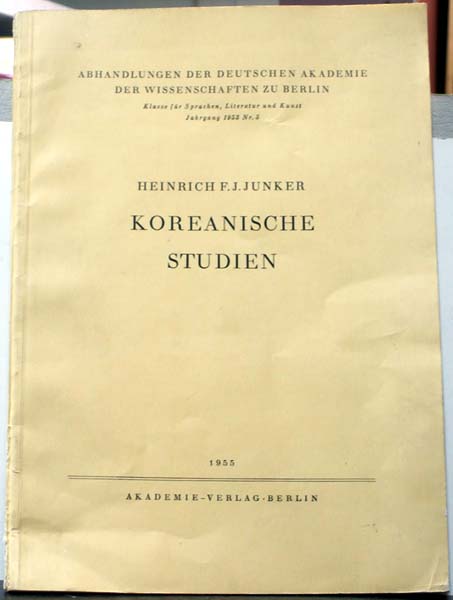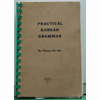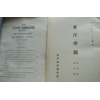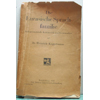|
|
|
| 625 |
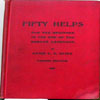
| |
FIFTY HELPS/1911
hard cover, cloth. 100 pages. 4th edition.Rare source for the foreign beginners in the use of the Korean language.
|
Annie L.A.Baird |
Fukuin Printing Co.Ltd.Yokohama |
English
|
|
|
| 612 |

| |
Journal Asiatique (sixieme Serie Tome 2)/1864
Hard cover, 8 vo.564 pages. First edition.
Korea section: DE LA LANGUE COREENNE par Leon De Rosny.from page 287 to
page 325.(very rare source on the study of Korean language by the
translator of the novel titled "Primtemps Parfume 1882, Paris" known as
the first Korean literature translated into western language.
|
A L'Imprimerie Imperiale,Paris |
A L'Imprimerie Imperiale,Paris |
French
|
|
|
| 608 |
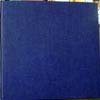
| |
LUI HO(流合) sive VOCABULARIUM SINENSE IN KORAIANUM CONVERSE ,Opus Sinicum origine in peninsula Korai impressum in Lapide Exaratum a Sinensi KO TSCHING DSCHANG et redditum curante PH.FR.de SIEBOLD./1838
hardcover, 29x38cm. 38 pages in Korean,Chinese,Japanese and German.First Korean book translated and published in western languages in Europe. Lew Hap (LUI HO)is a kind of Korean book dedicated to helping Korean Children to study the introduction and basic course of Chinese Characters from the early times in Chosen Dynasty .Extremely rare source on the linguistics of Korean Language......................................................Philipp Franz von Siebold:
Philipp Franz Balthasar von Siebold (February 17, 1796 in Würzburg - October 18, 1866 in Munich) was a German physician. He emerged as the first European to teach Western medicine in Japan. He obtained significance for his study of Japanese flora and fauna that were endemic to the unique biotic island landscape......................................................
EARLY LIFE:
Born in Würzburg, Bavaria into a family of doctors and professors of medicine, von Siebold initially studied medicine at the university of his hometown from November 1815. One of his professors was Franz Xaver Heller (1775-1840), author of the Flora Wirceburgensis (flora of the Grand Duchy of Würzburg, 1810-1811). Ignaz Döllinger (1770-1841), his professor of anatomy and physiology, however, most influenced him. Döllinger was one of the first professors to understand and treat medicine as a natural science. Von Siebold stayed at Dollinger's, where he came in regular contact with other scientists. He read the books of Alexander von Humboldt, a famous naturalist and explorer, which likely raised his desire for travels to far-away, distant lands. Philipp von Siebold became a Doctor by earning his M.D. in 1820. He initially practiced medicine in Heidingsfeld, Germany (now part of Würzburg).
Invited to Holland by an acquaintance of the family, von Siebold applied for a position as a military doctor. This position would enable him to travel to the Dutch colonies. He entered Dutch military service on June 19, 1822. He was appointed ship's doctor on the frigate Adriana on the voyage from Rotterdam to Batavia (present-day Djakarta) in the Dutch East Indies (present-day Indonesia). On his trip to Batavia on the frigate Adriana, he practiced his knowledge of the Dutch language and rapidly learned Malay. During the long trip, von Siebold started a collection of sea fauna. He arrived in Batavia on February 18, 1823.
As an army medical officer, von Siebold posted with an artillery unit. He stayed, however, a couple of weeks at the residence of the governor-general to recover from illness. With his erudition, he impressed the governor-general baron Van der Capellen and the head of the botanical garden Buitenzorg Caspar Georg Carl Reinwardt. Already, these men witnessed a second Engelbert Kaempfer and Carl Peter Thunberg (author of Flora Japonica), both former resident physicians at Deshima. The Batavian Academy of Arts and Science made von Siebold a member.
In Japan...................................................................................
Sent to Deshima Island Nagasaki in June 28, 1823, von Siebold arrived August 11, 1823 as the new resident physician and scientist to the island. During his eventful trip he barely escaped drowning during a typhoon in the East-Chinese Sea. Since only a very limited number of Dutch citizens were allowed on this island, the posts of physician and scientist had to be combined. At that time, Deshima was no longer in the possession of the Dutch East Indian Company but was kept running by the Dutch State, because of political reasons.
Von Siebold invited Japanese scientists to show them the marvels of western science, learning in return through them much about the Japanese and their customs. After curing a local influential officer, von Siebold gained the ability to leave the trade post. He used this opportunity to treat Japanese patients in the greater area around the trade post.
Since mixed marriages were forbidden, von Siebold "lived together" with his Japanese partner Kusomoto Taki (楠本滝). In 1827 Kusomoto Taki gave birth to their daughter, Oine. Later, Oine became the first Japanese "female doctor" and midwife. She died in 1903. Von Siebold used to call his wife "Otakusa" and named a Hydrangea after her.
Von Siebold began a medical school with the 50 students, appointed by the Shogun (see Rangaku). They helped the botanical and naturalistic studies of von Siebold. His school, the Narutaki-juku, grew into a meeting place for around 50 Rangakusha. Recognized by the Japanese, von Siebold served as an expert on Western science. The Dutch language became the lingua franca (common spoken language) for these academic and scholarly contacts until the Meiji Restoration.
His patients paid him in kind with a whole variety of objects and artifacts that would later gain historical significance. These everyday objects later became the basis of his large ethnographic collection, which consisted of everyday household goods, woodblock prints, tools and hand-crafted objects used by the Japanese people.
His main interest, however, focused on the study of Japanese fauna and flora. He collected as much material as he could. Starting a small botanical garden behind his home (there was not much room on the small island) von Siebold amassed over 1,000 native plants. In a specially built glasshouse he cultivated the Japanese plants to endure the Dutch climate. Local Japanese artists drew images of these plants, creating botanical illustrations and images of the daily life in Japan, which complemented his ethnographic collection. He hired Japanese hunters to track rare animals and collect specimens. Many specimens were collected with the help of his Japanese collaborators Ito Keisuke (1803-1901), Mizutani Sugeroku (1779-1833), Ohkochi Zonshin (1796-1882) and Katsuragawa Hoken (1797-1844), a physician to the Shogun. As well, von Siebold's assistant and later successor, Heinrich Bürger (1806-1858), proved to be indispensable in carrying on von Siebold's work in Japan.
Von Siebold first introduced to Europe such familiar garden-plants as the Hosta and the Hydrangea otaksa. Unknown to the Japanese, he was also able to smuggle out germinative seeds of tea plants to the botanical garden Buitenzorg in Batavia. Through this single act, he started the tea culture in Java, a Dutch colony at the time. Until then Japan had strictly guarded the trade in tea plants. Remarkably, in 1833, Java already could boast a half million tea plants.
During his stay at Deshima, he sent three shipments with an unknown number of herbarium specimens to Leiden, Gent, Brussels and Antwerp. The shipment to Leiden contained the first specimens of the Japanese giant salamander (Andrias japonicus) to be sent to Europe.
In 1825 the East Indian Company provided him with two assistants : apothecary and mineralogist Heinrich Bürger (his later successor) and the painter Carl Hubert de Villeneuve. Each would prove to be useful to von Siebold's efforts that ranged from ethnographical to botanical to horticultural, when attempting to document the exotic Eastern Japanese experience.
Reportedly, von Siebold was not the easiest man to deal with; as he continuously conflicted with his Dutch superiors, who held against him his superior attitude. This thread of conflict resulted in his recall in July 1827 back to Batavia. But the ship, the Cornelis Houtman, sent to carry von Siebold back to Batavia, was thrown ashore by a typhoon in Nagasaki bay. The same storm badly damaged Dejima and destroyed von Siebold's botanical garden. Repaired, the Cornelis Houtman set afloat. It left for Batavia with 89 crates of von Siebold's salvaged botanical collection, but von Siebold, however, remained behind in Dejima.
In 1828 von Siebold made the court journey to Edo. During this long trip he collected many plants and animals. But he also obtained from the court astronomer Takahashi Kageyasu several detailed maps of Japan and Korea (written by Ino Tadataka), an act strictly forbidden by the Japanese government. When the Japanese discovered, by accident, that von Siebold had mapped northern parts of Japan, the government accused him of high treason and of being a spy for Russia.
The Japanese ordered von Siebold into house arrest and expelled him from Japan on October 22, 1829. Satisfied that his Japanese collaborators would continue his work, he journeyed back on the frigate Java to his former residence, Batavia, in possession of his enormous collection of thousands of animals and plants, his books and ... his maps. The botanical garden of Buitenzorg would soon house von Siebold's surviving, living flora collection of 2,000 plants. He arrived in the Netherlands on July 7, 1830. His stay in Japan and Batavia had lasted for a period of eight years.
Return to Europe..............................................................................
Von Siebold arrived just at a time when, in 1830, political troubles erupted in Brussels, leading soon to the Belgian independence. Hastly he salvaged his ethnographic collections in Antwerp and his herbaria specimens in Brussels and brought them over to Leiden. Unfortunately, he left behind his botanical collections of living plants that were sent to the University of Gent. The consequent expansion of this collection of rare and exotic plants led to the horticultural fame of Gent. Nevertheless, the University of Gent presented him in 1841, in gratitude, specimens of every plant from his original collection.
Von Siebold settled in Leiden, taking with him the major part of his collection. The "von Siebold collection," containing many species type specimens, was the earliest botanical collection from Japan. Even today, it still remains a subject of ongoing research, a testimony to the depth of work undertaken by von Siebold. It contained about 12,000 specimens, from which he could describe only about 2,300 species. The whole collection was purchased for a handsome amount by the Dutch government. As well, von Siebold was granted a generous annual allowance by the Dutch King Willem I. In 1842 the King even raised von Siebold to the peerage as an esquire.
Title page of Flora JaponicaThe "von Siebold collection" opened to the public in 1831. He founded a museum in his home in 1837. His successor in Japan, the aforementioned Heinrich Bürger, sent him three more shipments of specimens. This flora collection formed the basis of the Japanese collections of the National Herbarium in Leiden and the Museum Naturalis. This museum later grew into the well-known and respected National Museum of Ethnology in Leiden.
During his stay in Leiden, he authored Nippon in 1832, the first tome of a richly illustrated ethnographical and geographical work on Japan. It also contained a report of his journey to the Shogunate Court at Edo. Given the scale of von Siebold's other publications, he proved to be quite prodigious; as six more tomes would appear until 1882.
More over, the Bibliotheca Japonica appeared between 1833 and 1841. This work was co-authored by Joseph Hoffmann and Kuo Cheng-Chang, a Javanese from Chinese extraction, who had journeyed along with von Siebold from Batavia. It contained a survey of Japanese literature and, in addition, a Chinese, Japanese and Korean dictionary.
The zoologists Coenraad Temminck (1777-1858), Hermann Schlegel (1804-1884) and Wilhem de Haan (1801-1855) "scientifically" described and documented von Siebold's collection of Japanese animals. The result led to the Fauna Japonica, a series of monographs published between 1833 and 1850, making the Japanese fauna the best-described non-European fauna - a remarkable feat for von Siebold.
Additionally von Siebold produced his Flora Japonica in collaboration with the German botanist Joseph Gerhard Zuccarini (1797-1848). It first appeared in 1835. The completed version, however, did not appear until after his death, finished in 1870 by F.A.W. Miquel (1811-1871), director of the Rijksherbarium in Leiden. This work established von Siebold's scientific fame, not only--and already--in Japan, but in Europe as well.
From the Hortus Botanicus Leiden--the botanical gardens of Leiden--many of Siebold's plants started their conquest of Europe and from there to other countries. Hosta and hortensia, Azalea, and the Japanese butterbur and the coltsfoot as well as the Japanese larch were the conquest that, then, begun to inhabit gardens across the "world," which likely consisted of the Colonial Trans-Atlantic, where trade flourished both in the North and the South, the East and the West of the two opposing hemispheres--the "Old World" and "New World."
Though he is well known in Japan ('Shiboruto-san'), mentioned in all schoolbooks, von Siebold is almost unknown to the Dutch or Germans, except among gardeners who admire many plants with the entitlement of the sieboldii and sieboldiana. The Hortus botanicus in Leiden has recently laid out the "von Siebold memorial garden", a Japanese garden with plants sent by von Siebold. Japanese visitors come and visit this garden, to pay their respect for him.
|
KO TSCHING DSCHANG(Kuo Cheng-Chang) / Philipp Franz von Siebold
|
Lugduni Batavorum,,Leiden,Netherlands |
German
|
|
|
|
|
|
|
|
| 417 |
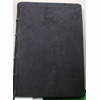
| |
Grammaire COREENNE/1881
hard cover, 8 vo. 328 pages.first and only edition.
First Korean Grammar written by French Missionaries.
Part one: parts of speech
Part two:syntax.
Appendices.Materials used for this Korean Grammar were based on Korean language used by the Seoulites who
lived in the second half of 19th century in Seoul,Korea.
Extremely rare source on Korea.
|
Mgr. F.F.Ridel |
Imprierie de L.Levy Et S.Salabelle,Yokohama,Japan |
French
|
|
|
|
|
|
|
|
|
| 294 |
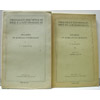
| |
Studies in Korean Etymology in 2 volumes./1949
volume 1, published in 1949, soft cover, 292 pages.
volume 2, published in 1953, soft cover, 64 pages.
Author stayed in Japan and employed a Korean Student to take a serious study of Korean language in 1924-1926. He collected various materials on Korean language ,spoken and written without making a journey to Korea. The Most recent philological study of Korean language.The main areas of discustion are: Phonetics,Morphology,Postpositions and adverbs,uninflected words,word fomation,and sentence structure.In the appendix are some romanized Korean text of songs and some chapters from the Bible. (annotation is based on KOREA,Library of Congress,1950)
|
G.J.Ramstedt |
Suomalais-Ugrilanen Suera,Helsink |
English
|
|
|
| 286 |
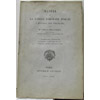
| |
MANUEL de La Langue Coreenne Parlee.
A L'Usage des Francais/1889
paperback,108 pages.
Grammatical introduction, Easy sentences and dialogues, List of the most common words. This book use the "Hangeul" - Korean alphabet - which was very unusual at that time. The first book in French and published in France to learn Korean language except Dictionnaire Coreen-Francais ( 1880)
|
M.Camille Imbault-Huart |
Imprimerie Nationale,paris |
French
|
|
|
|
|
|
| 64 |
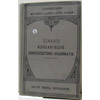
| |
Koreanische Konversations-Grammatik/1923
hard cover,422 pages. first edition.
A reliable study of Korean Grammar and Conversation.
Author lived in Korea under Japanese rule and working as a
professor of Korean art in a Korean university and published
a book titled HISTORY OF KOREAN ART in Germany both in English and
German in 1929.He also published several books on Korean
Language/Music/Art etc in Germany.
|
Andreas Eckardt |
Julius Groos,Verlag,Heidelberg |
German
|
|
|
| 50 |
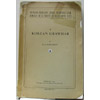
| |
A Korean Grammar/1939
paperback.200 pages.
Author stayed in Japan and employed a Korean Student to take a serious study of Korean language in 1924-1926.
He collected various materials on Korean language ,spoken and written
without making a journey to Korea.
The Most recent philological study of Korean language.The main areas of discustion are: Phonetics,Morphology,Postpositions and adverbs,uninflected words,word fomation,and sentence structure.In the appendix are some romanized Korean text of songs and some chapters from the Bible.
(annotation is based on KOREA,Library of Congress,1950)
|
G.J.Ramstedt |
Suomalais-Ugrilainen Seula,Helsinki |
English
|
|
|
[1] |

